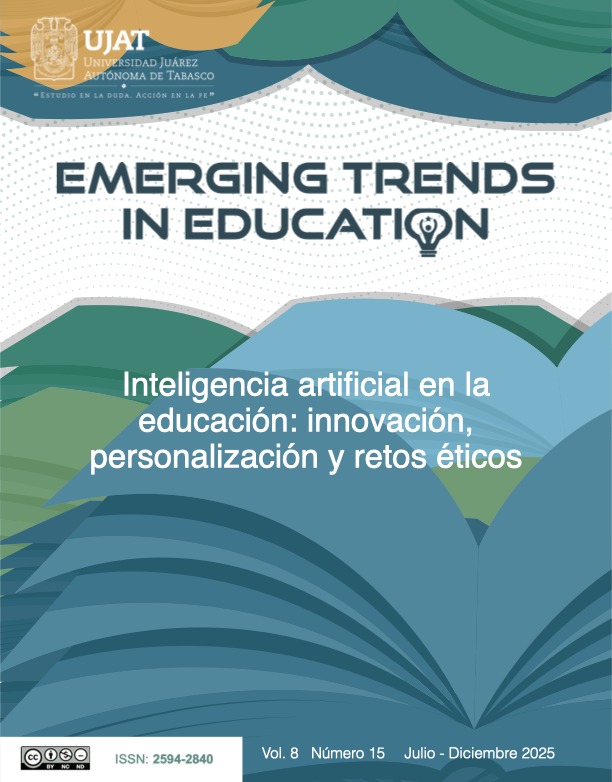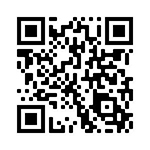Clima social escolar y acoso hacia pares en adolescentes. El rol mediador de la compasión.
DOI:
https://doi.org/10.19136/etie.v8n15.6327Palabras clave:
Acoso escolar, adolescentes, clima escolar, compasiónResumen
El contexto escolar desempeña un papel esencial en la prevención del acoso entre pares; sin embargo es necesario profundizar en el conocimiento de los mecanismos que median esta influencia. En dicho contexto este estudio se propuso examinar las relaciones directas e indirectas entre clima social escolar, compasión y acoso entre pares en estudiantes de secundarias públicas del sur de Sonora. Participaron en el estudio 450 estudiantes (M edad = 13.11 años, DE = 0.94), 219 (48.6%) del sexo masculino y 231 (51.4%) del sexo femenino. Se calculó un modelo de mediación que mostró relaciones negativas directas significativas del clima social escolar con la frecuencia de acoso a pares. Adicionalmente los resultados confirmaron que el clima escolar disminuye la frecuencia de acoso por su efecto positivo en la experiencia del estudiante de compasión hacia los pares víctimas de agresión. Se concluyó que un clima escolar positivo es esencial para prevenir el acoso entre pares en estudiantes de educación secundaria.
Referencias
Acosta, J., Chinman, M., Ebener, P., Malone, P. S., Phillips, A., & Wilks, A. (2019). Understanding the relationship between perceived school climate and bullying: A mediator analysis. Journal of School Violence, 18(2), 200–215. https://doi.org/10.1080/15388220.2018.1453820
Bandalos, D. L. (2018). Measurement theory and applications for the social science. The Guilford Press.
Batanova, M., & Loukas, A. (2016). Empathy and effortful control effects on early adolescents’ aggression: When do students’ perceptions of their school climate matter? Applied Developmental Science, 20(2), 79–93. https://doi.org/10.1080/10888691.2015.1067145
Bochaver, A. A., Korneev, A. A., & Khlomov, K. D. (2022). School Climate Questionnaire: A new tool for assessing the school environment. Frontiers in Psychology, 13, Article e871466. https://doi.org/fpsyg.2022.871466
Bradshaw, C. P., Cohen, J., Espelage, D. L., & Nation, M. (2021). Addressing school safety through comprehensive school climate approaches. School Psychology Review, 50, 221 236. https://doi.org/10.1080/2372966X.2021.1926321
Bravo-Santana, M. V., Varela, J., Terán-Mendoza, O., & Rodríguez-Rivas, M. E. (2023). Measuring school social climate in Latin American: the need for multidimensional and multi-informant test- A systematic review. Frontiers in Psychology, 14, Article e1190432. https://doi.org/10.3389/fpsyg.2023.1190432
Byrne, B. M. (2016). Structural equation modeling with AMOS (3rd. ed.). Routledge.
California Department of Education (2024). California school climate, health, and learning surveys. https://calschls.org/
Camodeca, M., & Nava, E. (2022). The long-term effects of bullying, victimization, and bystander behavior on emotion regulation and its physiological correlates. Journal of Interpersonal Violence, 37(3–4), 2056–2075. https://doi.org/10.1177/0886260520934438
Comisión Nacional para la Mejora Continua de la Educación (2024). Encuesta sobre acoso escolar entre estudiantes en educación secundaria. Informe ejecutivo. https://www.mejoredu.gob.mx/images/publicaciones/encuesta-acoso-2024.pdf
Chen, J.-K., Wang, S.-C., Chen, Y.-W., & Huang, T.-Z. (2021). Family climate, social relationships with peers and teachers at school, and school bullying victimization among third grade students in elementary schools in Taiwan. School Mental Health, 13, 452–461. https://doi.org/10.1007/s12310-020-09404-8
De Luca, L., Nocentini, A., & Menesini, E. (2019). The teacher’s role in preventing bullying. Frontiers in Psychology, 10, Article e1830. https://doi.org/10.3389/fpsyp.2019.01830
Finney, S. J., & DiStefano, C. (2013). Nonnormal and categorical data in structural equation modeling. In G. R. Hancock & R. O. Mueller (Eds.), Structural equation modeling: A second course (2nd ed., pp. 439–492). IAP Information Age Publishing.
Funder, D. C., & Ozer, D. J. (2019). Evaluating effect size in psychological research: Sense and nonsense. Advances in Methods and Practices in Psychological Sciences, 2(2), 156–168. https://doi.org/10.1177/2515245919847202
Gall, M. D., Gall, J. P., & Borg, W. R. (2007). Educational research: An introduction (7th ed). Pearson/Allyn & Bacon.
Goetz, J. L., & Simon-Thomas, E. (2017). The landscape of compassion: Definitions and scientific approaches. In E. M. Sepälä, E. Simon-Thomas, S. L. Brown, M. C. Worline, C. D. Cameron, & J. R. Doty (Eds.), The Oxford handbook of compassion science (pp. 3–16). Oxford University Press.
González, E. N., Peña, M. O., & Vera Noriega, J. A. (2017). Validación de una escala de roles de víctimas y agresores asociados al acoso escolar. Electronic Journal of Research in Educational Psychology, 15(1), 224–239. https://doi.org/10.14204/ejrep.41.16009
Haidt, J. (2003). Elevation and the positive psychology of morality. In C. L. Keyes & J. J Haidt (Eds.), Flourishing: Positive psychology and the life well-lived (pp. 275–289). American Psychological Association.
Hayes, A. F. (2018). Introduction to mediation, moderation, and conditional analysis: A regression-based approach (2nd ed.). Guilford Press.
Hultin, H., Ferrer-Wreder, L., Engström, K., Andersson, F., & Galanti, M. R. (2021). The importance of pedagogical and social school climate to bullying: A cross-sectional multilevel study of 94 Swedish schools. Journal of School Health, 91(2), 111–124. https://doi.org/10.1111/josh.12980
Hymel, S., & Swearer, S. M. (2015). Four decades of research on school bullying: An introduction. American Psychologist, 70(4), 293–299. https://doi.org/10.1037/a0038928
Hysing, M., Askeland, K. G., La Greca, A. M., Solberg, M. E., Breivik, K., & Sivertsen, B. (2021). Bullying involvement in adolescence: Implications for sleep, mental health, and academic outcomes. Journal of Interpersonal Violence, 36(17–18), 8992–9014. https://doi.org/10.1177/0886260519853409
Killen, M., & Smetana, J. G. (2015). Origins and development of morality. In M. E. Lamb & R. M. Lerner (Eds.), Handbook of child psychology and developmental science: Socioemotional processes (7th ed., pp. 701–749). John Wiley & Sons, Inc. https://doi.org/10.1002/9781118963418.childpsy317
Kline, R. B. (2023). Principles and practices of structural equation modeling (5th ed.). The Guilford Press.
Konishi, C., Miyazaki, Y., Hymel, S., & Waterhouse, T. (2017). Investigating associations between school climate and bullying in secondary schools: Multilevel contextual effects modeling. School Psychology International, 38(3), 240–263. https://doi.org/10.1177/0143034316688730
Koyanagi, A., Oh, H., Carvalho, A. F., Smith, L., Haro, J. M., Vancampfort, D., Stubbs, B., & DeVylder, J. E. (2019). Bullying victimization and suicide attempt among adolescents aged 12-15 years from 48 countries. Journal of the American Academy of Child and Adolescent Psychiatry, 58(9), 907–918. https://doi.org/10.1016/j.jaac.2018.10.018
Leadbeater, B., Sukhawathanakul, P., Smith, D., & Bowen, F. (2015). Reciprocal Association between interpersonal and values dimensions of school climate and peer victimization in elementary school children. Journal of Clinical Child & Adolescent Psychology, 44(3), 480–493. https://doi.org/10.1080/15374416.2013.873985
Loch, A. P., Astolfi, R. C., Leite, M. A., Gomide Papa, C. H., Ryngelblum, M., Eisner, M., & Tourinho Peres M. F. (2020). Victims, bullies and bully-victims: prevalence and association with negative health outcomes from a cross-sectional study in Sao Paulo, Brazil. International Journal of Public Health, 65, 1485–1495. https://doi.org/10.1007/s00038-020-01481-5
Marchante, M., Coelho, V. A., & Romao, A. M. (2022). The influence of school climate in bullying and victimization behaviors during middle school transition. Contemporary Educational Psychology, 71, Article e102111. https://doi.org/10.1016/j.cedpsych.2022.102111
Matos, M., Albuquerque, I., Galhardo, A., Cuhna, M., Pedroso Lima, M., Palmeira, L., Petrocchi, N., McEwan, K., Maratos, F. A., & Gilbert, P. (2022). Nurturing compassion in school: A randomized controlled trial of the effectiveness of a compassion mind training program for teachers. PLos ONE, 17(3), Article e0263480. https://doi.org/10.1371/jounal.pone.0263480
Mazzone, A., Yanagida, T., C. S. Caravita, S., & Strohmeier, D. (2019). Moral emotions and moral disengagement: Concurrent and longitudinal associations with aggressive behavior among early adolescents. The Journal of Early Adolescence, 39(6), 839–863. https://doi.org/10.1177/0272431618791276
McCormick, M. P., Cappella, E., O´Connor, E. E., & McClowry, S. G. (2015). Context matter for social emotional learning: Examining variation in program impact by dimensions of school climate. American Journal of Community Psychology, 56, 101–119. https://doi.org/10.1007/s10464-015-9733-z
Montero-Carretero, C., Pastor, D., Santos-Rosa, F. J., & Cervelló, E. (2021). School climate, moral disengagement and empathy as predictors of bullying in adolescents. Frontiers in Psychology, 12, Article e656775. https://doi.org/10.3389/fpsyg.2021.656775
Narvaez, D. (2023). Wellness-informed classrooms with sustaining climates foster compassionate morality. In T. Lovat, R. Toomey, N. Clement, & K. Dally (Eds.), Second international research handbook on values education and student wellbeing (pp. 129–146). Springer. https://doi.org/10.1007/978-3-031-24420-97
Organización Mundial de la Salud (2002). Informe mundial sobre la violencia y la salud: resumen. https://iris.who.int/bitstream/handle/10665/43431/9275324220_spa.pdf
Oriol, X., Miranda, R., & Amutio, A. (2023). Dispositional and situational moral emotions, bullying and prosocial behavior in adolescence. Current Psychology, 42, 1115–1132. https://doi.org/10.107/s12144-021-02396-x
Ortega-Ruiz, R., Del Rey, R., & Casas, J. A. (2016). Evaluar el bullying y el ciberbullying validación española del EBIP-Q y del ECIP-Q. Psicología Educativa, 22(1), 71–79. https://doi.org/10.1016/j.pse.2016.01.00
Ortiz Barón, M. J., Etxebarria Bilbao, I., Apodaca Urquijo, P., Conejero López, S., & Pascual Jimeno, A. (2018). Moral emotions associated with prosocial and antisocial behavior in school-aged children. Psicothema, 30(1), 82–88. https://doi.org/10.7334/psicothema2016.143
Pabian, S., Dehue, F., Völlink, T., & Vandebosch, H. (2022). Exploring the perceived negative and positive long-term impact of adolescent bullying victimization: A cross-national investigation. Aggressive Behavior, 48(2), 205–218. https://doi.org/10.1002/ab.22006
Peplak, J., & Malti, T. (2017). “That really hurt, Charlie!” Investigating the role of sympathy and moral respect in children’s aggressive behavior. The Journal of Genetic Psychology, 178(2), 89–101. https://doi.org/10.1080/00221325.2016.1245178
Rodríguez Mandira, M., & Stoltz, T. (2021). Bullying risk and protective factors among elementary school student over time: A systematic review. International Journal of Educational Research, 109, Article e101838. https://doi.org/10.1016/j.ijer.2021.101838
Saarento, S., Garandeau, C. F., & Salmivalli, C. (2015). Classroom and school-level contribution to bullying and victimization: A review. Journal of Community & Applied Psychology, 25(3), 204–218. https://doi.org/10.1002/casp.2207
Schoeler, T., Duncan, L., Cecil, C. M., Ploubidis, G. B., & Pingault, J.-B. (2018). Quasi-experimental evidence on short- and long-term consequences of bullying victimization: A meta-analysis. Psychological Bulletin, 144(12), 1229–1246. https://doi.org/10.1037/bul0000171
Tangney, J. P., Stuewig, J., & Mashek, D. J. (2007). Moral emotions and moral behavior. Annual Review of Psychology, 58, 345–372. https://doi.org/10.1146/annurev.psych.56.091103.070145
United Nations Educational, Scientific, and Cultural Organization (2019). Behind the numbers: Ending school violence and bullying. https://unesdoc.unesco.org/ark:/48223/pf0000366483
United Nations Educational, Scientific, and Cultural Organization (2024). Safe to learn and thrive. Ending violence in and through education. https://doi.org/10.54675/LUPY3293
Valdés Cuervo, A. A., & Carlos Martínez, E. A. (2014). Relación entre el autoconcepto, el clima familiar y el clima escolar con el bullying en estudiantes de secundaria. Avances en Psicología Latinoamericana, 32(3), 447–457. https://doi.org/10.12804/apl32.03.201407
Valdés-Cuervo, A. A., & Carlos Martínez, E. A. (2017). Relación entre disciplina parental restaurativa, manejo de la vergüenza, compasión y acoso escolar. Revista Mexicana de Psicología, 34(1), 37–45. https://www.redalyc.org/articulo.oa?id=243056045004
Valdés-Cuervo, A. A., Tánori-Quintana, J., Sotelo-Quiñonez, T. I., & Ochoa-Arreola, J. A. (2018). Prácticas docentes, clima social, seguridad escolar y violencia entre estudiantes. Magis, Revista Internacional de Investigación en Educación, 10(21), 109–120. https://doi.org/10.11144/Javeriana.m10-21.pdcs
Volk, A. A., Dane, A. V., & Marini, Z. A. (2014). What is bullying? A theoretical redefinition. Developmental Review, 34(4), 327–343. https://doi.org/10.1016/j.dr.2014.09.001
Vossen, H. G. M., Piotrowski, J., & Valkenburg, P. M. (2015). Development of the Adolescent Measure of Empathy and Sympathy (AMES). Personality and Individual Differences, 74, 66–71. https://doi.org/10.1016/j.paid.2014.09.040
Descargas
Publicado
Número
Sección
Licencia
Derechos de autor 2025 Emerging Trends in Education

Esta obra está bajo una licencia internacional Creative Commons Atribución-NoComercial-SinDerivadas 4.0.





























